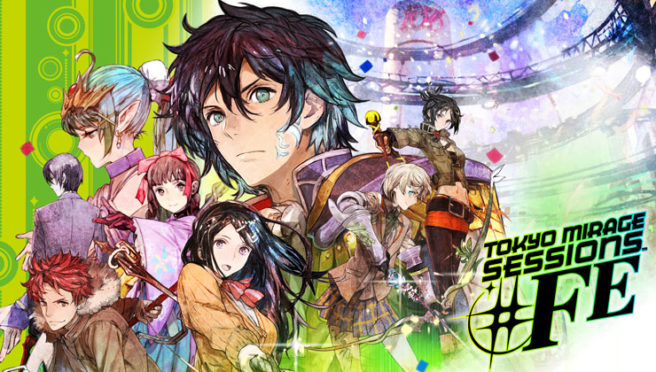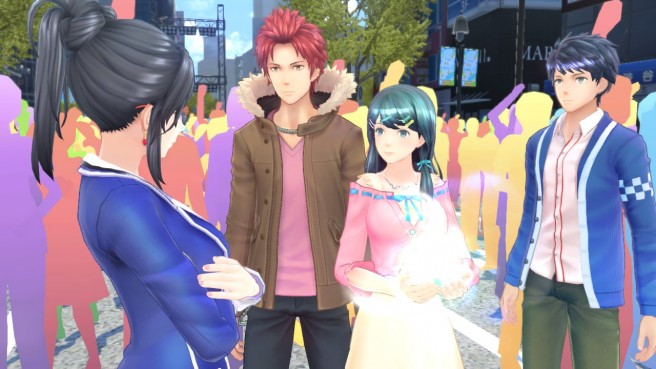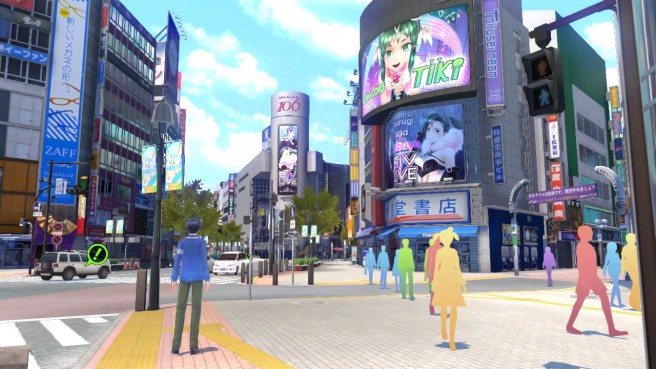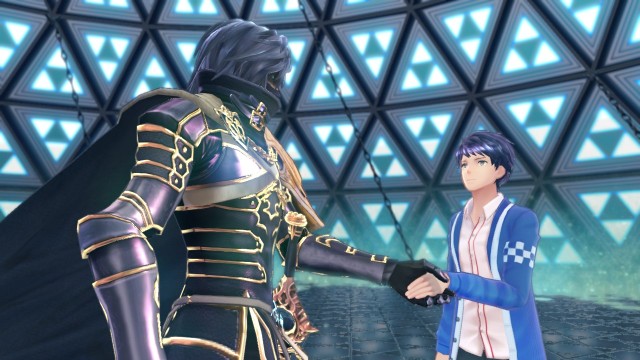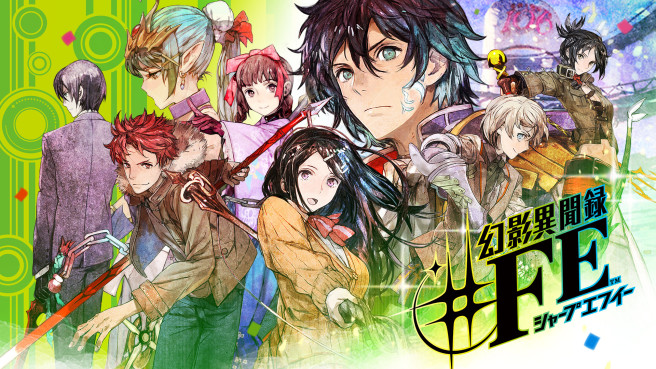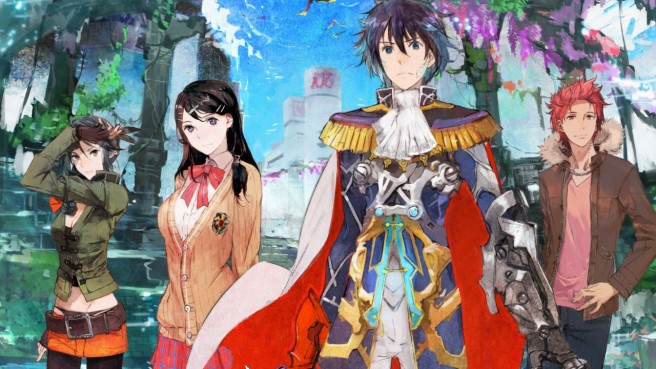Tokyo Mirage Sessions devs #FE share some deep messages about the RPG
Posted on 8 years ago by Brian(@NE_Brian) in News, Wii U | 16 Comments
The Tokyo Mirage Sessions #FE Special Edition contains several goodies. Probably the neatest of the bunch is an art book. Towards the end, you’ll find messages from three of the project’s most important developers: chief director/game designer Wataru Hirata, director Eiji Ishida, and producer Shinjiro Takata.
After going through the book, I thought it’d be worthwhile to share those messages here since each one is quite interesting (and lengthy!). Hirata’s note hits close to home in particular, as he thanks late Nintendo president Satoru Iwata – who passed away just a little over a year ago.
Head past the break for transcripts of Hirata, Ishida, and Takata’s messages.
Tokyo Mirage Sessions #FE devs on adapting for the west, Atlus localization, Japanese-only voices
Posted on 9 years ago by Brian(@NE_Brian) in News, Wii U | 52 Comments
Before Tokyo Mirage Sessions #FE landed in the states, GameSpot caught up with Atlus producer Shinjiro Takata and Nintendo designer Hitoshi Yamagami. The two talked about topics such as localization – including Atlus handling the game and keeping the voices in Japanese – as well as what made Nintendo and Wii U a good fit for the project.
Head past the break for some of Takata and Yamagami’s responses. GameSpot’s full interview can be read here.
Genei Ibun Roku #FE devs on reproducing Shibuya, game structure, scrapped battle intro idea
Posted on 9 years ago by Brian(@NE_Brian) in News, Wii U | 14 Comments
Several developers behind Genei Ibun Roku #FE were interviewed in Nintendo Dream’s February issue. Surprisingly, the March edition has another interview with the team as well. The lengthy lineup of staff who participated include producer Hitoshi Yamagami (Nintendo), director Kaori Ando (Nintendo), producer Shinjiro Takata (Atlus), director Eiji Ishida (Atlus), chief director Wataru Hirata (Atlus), art director Fumitaka Yano (Atlus).
Nintendo Dream’s latest feature isn’t quite as interesting as last month’s where we learned that Genei Ibun Roku #FE was originally planned for 3DS and considered a wide array of genres. But there are still quite a few juicy tidbits. After the break, you can see what the developers had to say about reproducing Shibuya, the game structure, and an idea for battle intros that was scrapped.
Genei Ibun Roku #FE devs on how the setting and Fire Emblem characters were chosen
Posted on 9 years ago by Brian(@NE_Brian) in News, Wii U | 19 Comments
Last week, we posted some translated excerpts from Nintendo Dream’s Genei Ibun Roku #FE interview. It’s a very interesting read since it gives you more of a clear picture about the project’s origins and how the game eventually turned into an RPG. If you missed it, be sure to check it out here.
We have a few final excerpts from Nintendo Dream’s piece today. Primarily, today’s topics include an in-depth explanation as to how the setting was decided upon, and how the team determined which characters from Fire Emblem to include.
Head past the break for the translation. The comments are from the interview with producer Hitoshi Yamagami (Nintendo), director Kaori Ando (Nintendo), producer Shinjiro Takata (Atlus), director Eiji Ishida (Atlus), chief director Wataru Hirata (Atlus), and art director Fumitaka Yano (Atlus).
Genei Ibun Roku #FE devs – thought about different genres, considered 3DS, more
Posted on 9 years ago by Brian(@NE_Brian) in News, Wii U | 39 Comments
In late December, Nintendo published Genei Ibun Roku #FE in Japan. Nintendo Dream thought it would make sense to speak with the game’s staff now that development is complete. The Japanese magazine caught up with producer Hitoshi Yamagami (Nintendo), director Kaori Ando (Nintendo), producer Shinjiro Takata (Atlus), director Eiji Ishida (Atlus), chief director Wataru Hirata (Atlus), and art director Fumitaka Yano (Atlus). That’s quite a number of developers indeed!
We’ve translated a lengthy part of the interview below. The excerpts are very insightful, as the developers spoke about how they thought about different genres for the project, considered 3DS (even making a project plan), and more.
Shin Megami Tensei X Fire Emblem – origins, difficulties, fans, music, and more
Posted on 10 years ago by Brian(@NE_Brian) in News | 18 Comments
This comes from Atlus producer Shinjiro Takata and Nintendo producer Hitoshi Yamagami…
On the speculation there was about the project…
Shinjiro Takata: Everybody is pretty much off the mark with what they’ve thought about this game, but one thing that people got wrong the most in Japan—at the end of the first trailer we announced, there was a line that said—people who are fans of Japanese voice actors knew the voice of Yuichi Nakamura. He generally voices main characters, so they were saying, oh, Nakamura’s going to voice the main character. Actually, he voices someone completely different. They were off the mark there.
On how the project came together…
Shinjiro Takata: What happened was, in the process of making this game—the whole idea started when Mr. Hitoshi Yamagami, who is a producer at Nintendo, brought the idea of making a simulation, a strategy game, to Atlus. This was a problem, because Atlus is well known for making JRPGs. That’s our bailiwick. The next thing was, well, what do we do? Do we make it fantasy-based, because Fire Emblem is known for fantasy settings? That kind of fantasy game isn’t really what Atlus tends to put out, though. In the beginning phases of making this game, we really didn’t know which direction to push it in. Do we push it closer to Fire Emblem or to the modern setting of Shin Megami Tensei?
On how long it took to get to a point where that decision was solidified and production went forward…
Shinjiro: Deciding what to make it closer to, that happened a bit after Mr. Yamagami brought us the idea. The problem is, if you make it too much like a Fire Emblem game, then why doesn’t Intelligent Systems just make it themselves? The goal for this was to do something that the Fire Emblem series can’t do. In the end, the reason the game looks the way it does, the reason the content is the way it is, is because this is something we wanted to do as an Atlus game, a game only Atlus could make.
Shin Megami Tensei X Fire Emblem began with Atlus making a DSi/3DS photo booth app
Posted on 10 years ago by Brian(@NE_Brian) in News, Wii U | 0 comments
This information comes from producer Shinjiro Takata…
“I’m not too sure, since this all happened a long time ago. But the way it all started, Atlus was involved with Nintendo when we were making a purikura [Japanese photo booth] app for the Nintendo DSi and the Nintendo 3DS. Then there was a conversation that started about whether Atlus might be in charge of making a new Fire Emblem game. It wasn’t anything serious at the time. I think we turned it down at first because we had too much on our plates.”
